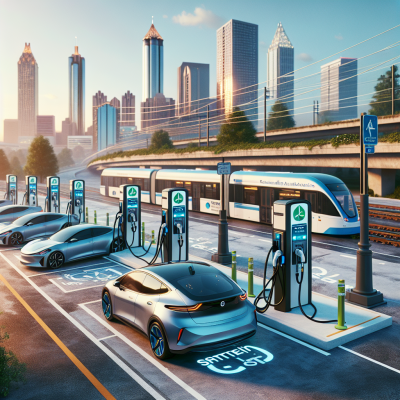
Navigating Atlanta by Car
Driving in Atlanta: What You Need to Know
Overview of Major Highways and Routes
Atlanta, often referred to as the Crossroads of the South, is a central hub for road transportation in the southeastern United States. The city is crisscrossed by several major highways, making it accessible from all directions. Key routes include:
-
Interstate 285 (I-285): Known as The Perimeter, this highway encircles the city and connects with all major interstates, facilitating easy navigation around Atlanta.
-
Interstate 75 (I-75): Running from the northwest to the south, I-75 is a critical route that links Atlanta to Chattanooga in the north and Macon in the south.
-
Interstate 85 (I-85): This highway travels northeast toward Greenville and southwest toward Montgomery, intersecting with I-75 in the city center—a notorious traffic junction known as the Downtown Connector.
-
Interstate 20 (I-20): Running east-west, this highway provides access from Dallas to Augusta and beyond, cutting through downtown Atlanta.
Navigational ease in Atlanta largely depends on understanding these interstate connections and planning your routes accordingly, especially since traffic conditions can vary significantly throughout the day.
Tips for Dealing with Traffic Congestion
Driving in Atlanta can be a challenge, particularly during peak rush hours. Here are some strategies to effectively navigate the city's traffic:
-
Plan Around Peak Hours: Traffic is heaviest from 7:00 – 9:00 AM and 4:00 – 6:30 PM on weekdays. If possible, schedule your travel outside of these windows to avoid congestion.
-
Utilize Traffic Apps: Apps such as Waze and Google Maps provide real-time traffic updates and suggest alternate routes to help you avoid heavily congested areas.
-
Stay Informed with Local News: Radio stations and apps like the Georgia Department of Transportation's 511 service offer traffic alerts and updates.
-
Use HOV Lanes: High Occupancy Vehicle lanes are available on both I-75 and I-85 for cars with two or more passengers, allowing faster travel during high traffic periods.
Navigating these highways and strategic planning can significantly ease your driving experience in Atlanta.
Parking in Atlanta
Best Parking Options in Downtown, Midtown, and Buckhead
Parking in Atlanta varies by neighborhood, each with its own unique challenges and options:
-
Downtown: Known for its business centers and tourist attractions, parking here can be at a premium. Look for parking garages and lots near major sites like Centennial Olympic Park and Georgia Aquarium. Public lots such as the Peachtree Center Parking deck offer convenience but can fill up quickly.
-
Midtown: Offers more street parking than Downtown and an array of parking garages. The area around Piedmont Park and the Fox Theatre is well-served by parking decks such as the Midtown Parking Plaza.
-
Buckhead: Known for upscale shopping and dining, Buckhead has numerous parking garages near its shopping centers like Lenox Square and Phipps Plaza. Street parking is also accessible but fills quickly during busy periods.
Mobile Apps and Services for Finding Parking
Technology offers several solutions to streamline parking in Atlanta:
-
ParkMobile: One of the most popular apps in Atlanta, ParkMobile allows users to easily find, reserve, and pay for parking via mobile devices.
-
SpotHero: This app provides advanced booking for parking spaces, often with discounts, helping you secure a spot ahead of time.
-
Parking Panda: Though not as extensively used, this app provides another option for finding and reserving parking, especially for special events.
For anyone navigating Atlanta by car, understanding the city's highway layout, effectively managing traffic, and utilizing parking apps and services are essential skills to make the most of your driving experience in this bustling metropolis.






